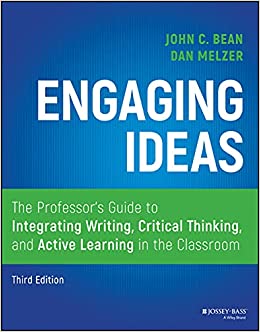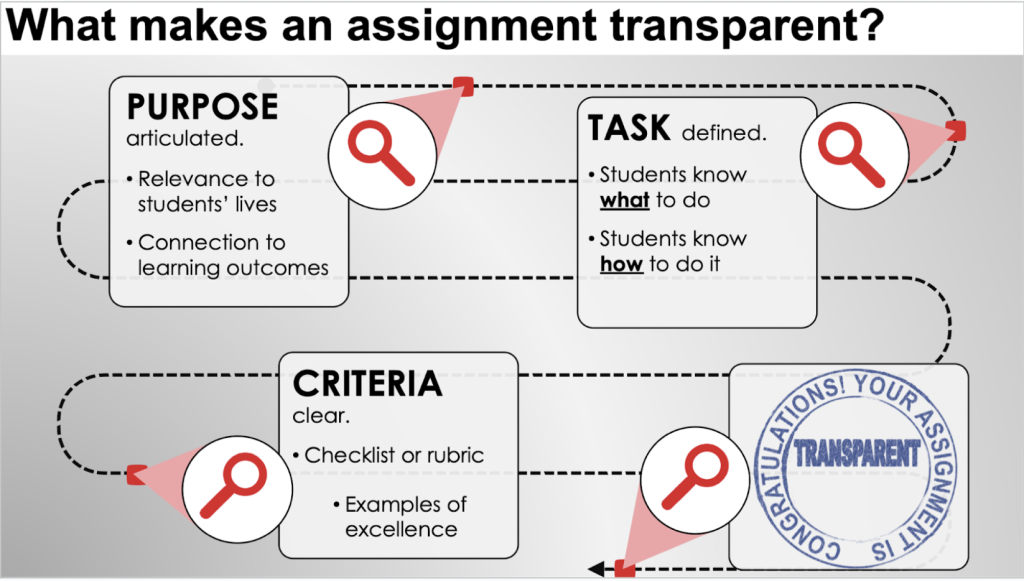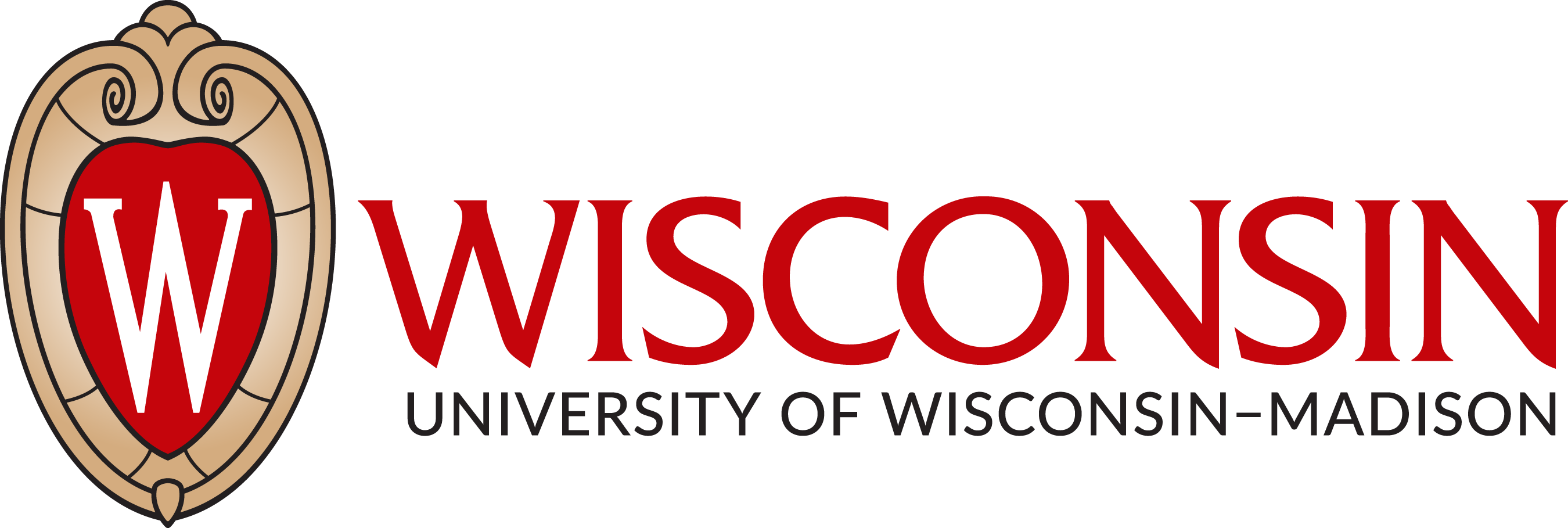V. High-Stakes, Formal Writing Assignments
How to incorporate high-stakes writing into your teaching

As students progress through their degree programs, it becomes increasingly important for them to learn the major genres, research strategies, and writing conventions of their field. Because writing expectations vary across disciplinary and professional contexts, students benefit from transparent explanation of what those expectations are, how to achieve them, and why they’re important. This can be accomplished through carefully designed high-stakes writing assignments.
Be intentional and why, when, and how you incorporate high-stakes writing assignments into your teaching. By aligning your assignment(s) with course goals, working to make the assignment effective and transparent, and giving students a rhetorical context, you increase the likelihood that your assignment will be “high-impact” for students.
Interested in designing a high-stakes writing assignment for your course but not sure where to start or what to include? Contact the Writing Across the Curriculum (WAC) team to set up a one-to-one consultation.
Consider the Novice-Expert Framework
Consider where the students in your class might fall on a continuum from “outsider” to “insider” within your discipline, or from novice to expert writer. Compare where you would expect students to fall if they were enrolled in a first-year interest group (FIG) course, an upper-level course, or a graduate seminar. Use these considerations to guide your selection of what research projects and writing genres you might assign across your teaching.
Align the Assignment with Your Course Goals & Context
As you design your high-stakes writing assignment, it is important to keep in mind backward design by first considering your goals for the course and then building assignments that help you meet those goals. Whether you design research and writing assignments as formative assessments (ongoing evaluations used to guide learning and provide feedback throughout the learning process) or summative assessments (end-of-unit evaluations that measure student learning at a specific point in time), do your best to align them with your course goals.
If you are asking students to complete a written assignment, carefully consider the purpose that their writing will serve: Will students be writing as a way of comprehending or applying complex concepts? Will students be writing as a way of demonstrating their mastery of disciplinary/professional communication? Some combination?
Make the Assignment Effective
Experts in Writing Across the Curriculum argue that students learn most successfully when formal, high-stakes assignments engage them with “authentic research projects that promote disciplinary ways of inquiry and argument and are written in real disciplinary genres” (Bean & Melzer 2021, 218). So, an effective high-stakes assignment identifies the many components that contribute to a polished final product, explaining what research and writing practices are conventional in the field and to that specific genre.
Research from the National Survey of Student Engagement (NSSE) shows that deep learning depends less on the amount of writing assigned in a course than on the design of the writing assignments themselves. In other words, the quality of writing assigned matters more than the quantity of pages assigned.
According to this and other research, effective assignments do the following three things:

Engage students in meaning-making: A meaning-constructing task asks students to bring their own critical thinking to bear on problems that matter to both the writer and the intended audience. A meaning-constructing task typically presents students with a disciplinary problem, asks them to formulate their own problems, or otherwise engages them in active critical thinking in a specific rhetorical context.
A clear explanation of expectations: Effective assignments clearly present the instructor’s expectations for a successful performance. Ideally, the assignment prompt also explains the purpose of the assignment in terms of the course’s learning goals and presents the instructor’s evaluation criteria.
Interactive components: Interactive activities situate writing as a process of inquiry and discovery, promote productive talk about the writer’s emerging ideas, and encourage multiple drafts and global revision.
For more information about effective assignment design and research based on the NSSE, check out the section on writing as a high-impact practice.
Create a Rhetorical Context for Your Students
Creating a rhetorical context for your assignments means considering the role students will play in their writing, the audience they are meant to address, the format (or genre) of the writing task, and the task they are meant to accomplish. The mnemonic RAFT is helpful to recall these four components (Bean & Melzer 2021).
| R | Role | Having a role helps students understand the kind of change they hope to bring about in their audience’s view of the subject matter. Without a specific role to play other than “student,” writers in your class might assume that their purpose is simply to regurgitate information to the instructor. Consider having students take on an authentic role (e.g., a researcher applying for a grant or a citizen writing to a public representative) in your writing assignment. |
| A | Audience | Specifying an audience goes hand-in-hand with establishing the student’s role. For or to whom are they writing? By identifying an audience, the instructor can help students see how their writing might influence a reader’s stance. |
| F | Format/Genre | Specifying a genre (e.g., an experimental report, op-ed piece, grant proposal) helps students transfer earlier genre knowledge to the current task and make decisions about document design, organization, and style. It also help the instructor clarify expectations about length, citation style, etc. More important still, the rhetorical awareness enabled by writing in a specific genre also creates an awareness of a discourse community at work.
To students, college writing assignments often appear to be an isolated transaction between student and teacher with no larger significance. Students assume that strange features of the assignment reflect the idiosyncrasies of the instructor rather than the conventions of a larger community. When instructors assign authentic genres, there is an opportunity to make discourse community values and expectations explicit. |
| T | Task | The task itself sets forth the subject matter of the assignment. Unlike topic-focused tasks (e.g., research or write about X), which can lead to unfocused papers that merely report or regurgitate information, a truly engaging task is typically embedded in disciplinary “problems” and disciplinary ways of thinking and argumentation. A problem-focused task should give students agency to bring their own critical thinking to bear on the subject matter—that is, to engage them in making their own meaning. |
Why should you care about genre?
As discussed on the previous page—”Why incorporate high-stakes writing into your teaching?“—genre refers to the conventional combination of format, organization, purpose, and audience for specific types of writing. Academic genres can include a wide variety of writing projects such as literature analyses, lab reports, business proposals, scholarship applications, and even emails.
Designing assignments with specific genres in mind can help you explain to students how each of your assignments has specific expectations that are likely different from other papers they might be writing. Talking about genre expectations with students also helps prepare them for writing across different genres throughout their careers and personal lives.
Genres are a type of social action that recurs frequently enough to develop into recognizable forms (Miller, 2015). Consider, for instance, how lab reports as we know them today could not have simply appeared one day fully formed—rather, the genre developed its signature structure (introduction, methods, results, discussion) over hundreds of years of scientists striving to communicate their experimental findings to one another in stable, reliable ways (Bazerman 1988). This means that adopting a specific genre to write in is a social action—each time we write within a genre we adjust that genre to meet the social factors (such as our specific audience, the context in which we are writing, and our exact purpose for writing).
As you design writing assignments, consider that even a simple writing assignment will have different expectations (such as the intended audience and how to develop a successful argument) across different disciplines and even classes within a discipline. This is why it is essential to identify the role, audience, format/genre, and task for your students for any high-stakes writing assignment. You can do this by writing a detailed assignment description (check out our annotated example of a well-designed writing assignment as well as other examples of assignments from UW-Madison courses), discussing the expectations of the genre in class, and providing samples (either of past students’ work or from authentic professional or academic contexts).
Additionally, writing in specific genres can also be an action towards linguistic justice. When students write just a typical academic essay, their audience is usually seen as a highly privileged audience and we have traditionally expected that students write in a tone and dialect to match this expectation. However, when we ask students to write, for example, a news piece to be published in their home community about climate change, their audience is now their own community and they can choose the language that best suits this readership. Writing for their community allows marginalized students a chance to bring their personal experiences into the classroom as an asset rather than a deficit. No matter the genre, providing a specific genre with designated readers, context, and purpose gives students a specific reason to choose the dialect appropriate to the genre rather than setting the arbitrary standard of Standard Academic English.
Make the Assignment Transparent
An assignment that seems clear to you as the instructor can still be confusing to your students. While designing a high-stakes writing assignment, ask yourself what assumptions you might be making about students’ procedural or background knowledge. Consider getting feedback from a colleague or WAC team member on what might be unclear to your students.
As an instructor, you want to aim to make your assignment as transparent as possible for your students. The goal of transparent assignment design is “to make learning processes explicit and equally accessible for all students” (Winkelmes et al. 2016, 1). In particular, you want to ensure that you are being clear about (1) the purpose, (2) the task, and (3) the criteria for success for your writing assignment.
- Purpose: How is the assignment connected to course learning outcomes? Why are students being asked to do this assignment?
- Task: What do students need to do? How do they do it?
- Criteria for Success: How will students be evaluated? How will they know if they’ve succeeded?
For more information about transparent assignment design, consider checking out the website for TILT (Transparency in Learning and Teaching).

Example of Transparent Assignment Design
Below are two versions of the same writing assignment from an introductory Communications course: one that is less transparent, and one that is more transparent.
Version 1: Less Transparent
Communications 100E, Interview Assignment
Used by permission of Katharine Johnson, University of Nevada, Las Vegas
- Select a professional in your prospective academic discipline and/or career filed that is considered an expert in an area in which you are interested
- Secure an interview with the professional for a date and time that is convenient for both of you.
- Prepare 8-10 questions to ask the professional about their knowledge of a particular academic discipline/career field.
- Conduct a 20-30 minute, face-to-face interview to gather knowledge that will help you make an informed decision about the major/career you are considering. You will want to audio/video record the interview with the interviewee’s permission.
- Prepare a typed transcript of the questions and answers using the audio/ video recording
- Write a 400-500 word reflection paper in which you address the following items:
- Who you selected and why?
- What you learned from them that is most interesting?
- What this assignment helped you learn about your major/career decision?
- What questions you still have?
- Submit the typed transcript and reflection paper to your instructor
Version 2: More Transparent
Communications 100E, Interview Assignment
Used by permission of Katharine Johnson, University of Nevada, Las Vegas
Due dates:
- Sept 30 – Draft interview questions
- October 15 – Transcript of interviews – November 17 – Report
Purpose: The purpose of this assignment is to help you make an informed decision about the major/career you are considering.
Skills: This assignment will help you practice the following skills that are essential to your success in school and professional life:
- Accessing and collecting information from appropriate primary and secondary sources
- Synthesizing information to develop informed views
- Composing a well-organized, clear, concise report to expand your knowledge on a subject in your major.
Knowledge: This assignment will also help you to become familiar with the following important content knowledge in this discipline:
- Issues facing professionals in a field
- Scholarly research formats for documenting sources and creating reference pages (i.e.,
bibliographies).
Task: To complete this assignment you should:
- Secure an interview with two professionals in hour prospective academic discipline
and/or career field who are considered experts. - Schedule the interviews with the professionals at a date and time that is convenient for
both of you. - Prepare 8-10 questions to ask the professionals about their expertise in a particular
academic or career field. The questions must be based on a review of the filed using 5 credible sources as defined by the librarian in our research module. Sources should be cited using APA formatting. - Conduct a 2 -3 -minute, face-to-face interview with each professional to gather knowledge that will help you make an informed decision about the major/career you are considering. You will want to audio/video record the interview with the interviewee’s permission.
- Prepare a typed transcript of the interviews
- Compare and contrast the information provided by both professionals in an 8-page (1.5
spaced, 12-point Times New Roman font, 1 inch margins) report that documents the advantages and disadvantages of a career in the selected field.
Criteria for success: Please see the attached rubric.
Notice how Version 2 (the revised, more transparent assignment) foregrounds the purpose of the assignment. Students in this class will know at the outset why they are being asked to complete this assignment. The revised instructions also clearly outline the task and criteria for success.
Encourage Metacognition
Metacognition refers to the ability to think about and reflect on one’s own learning and thinking process. It is essential to give students opportunities to engage in metacognition when designing a high-stakes writing assignment.
Students can engage in metacognition before writing, during the writing process, or after completing a writing task:
| Stage of the writing process | Questions to encourage metacognition |
| Before writing: students can reflect on goals | What do I want to accomplish in this paper?
How do I plan to navigate this assignment? How do I want to use/not use AI intentionally? |
| During writing: students can assess progress | What is the best thing about my draft so far?
Where am I stuck right now? What is affecting my writing process? |
| After writing: students can reflect on how it went | If I had more time, what would I change or add?
How has this changed from earlier drafts? What challenges arose in the process? Am I proud of this paper? |
One way to encourage students to engage in metacognition is to require a “cover memo” or “writer’s memo” with the final draft of their assignment. These one-page memos give students the opportunity to reflect on how the assignment went—including where they had successes and challenges, what they might do differently next time, or what they might do if they had more time. Cover memos may also ask students to explain how they have incorporated feedback from the instructor or their peers into the final product. These memos can be helpful for instructors when reading and evaluating student writing, as they point to places where changes have been made and give a sense of how the student feels about the final draft. The memos are beneficial to students in that they afford space for them to reflect on their learning, writing process, and critically self-evaluate with regards to a particular assignment. When assigning a cover memo, make sure to give students specific prompts to respond to.
For more on reflective writing, see Boston University’s (2023) website on “Reflective Writing Activities.”
References
Bazerman, Charles. Shaping Written Knowledge: The Genre and Activity of the Experimental Article in Science. University of Wisconsin Press, 1988.
Miller, Carolyn. “Genre as Social Action (1984), Revisited 30 Years Later.” Letras & letras, 2015, Vol.31 (3), p.56-72. DOI: 10.14393/LL63-v31n3a2015-5

